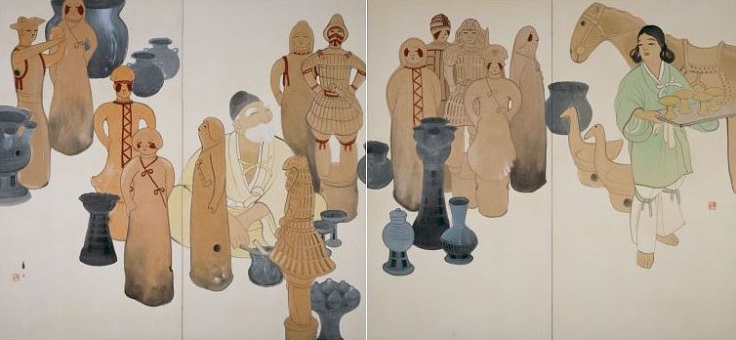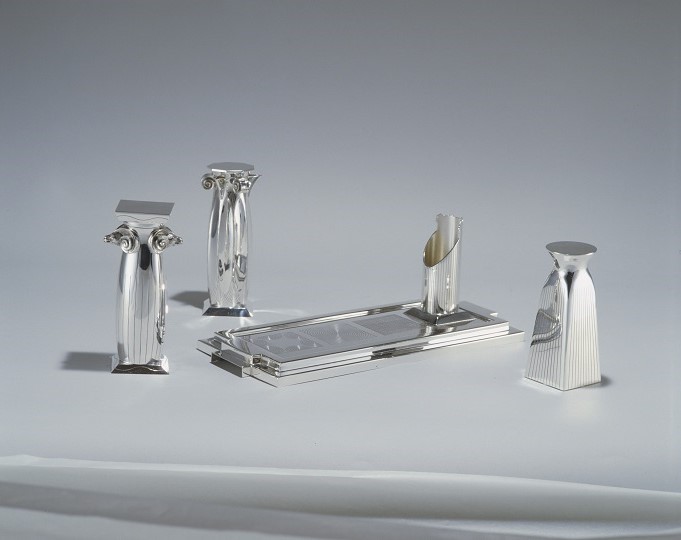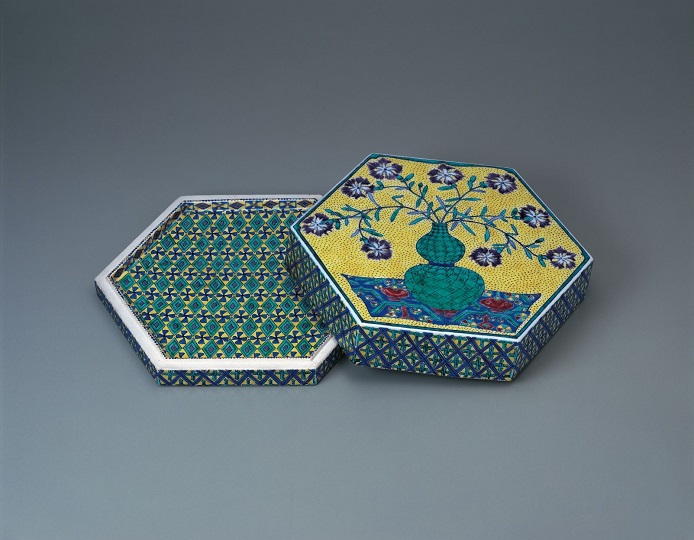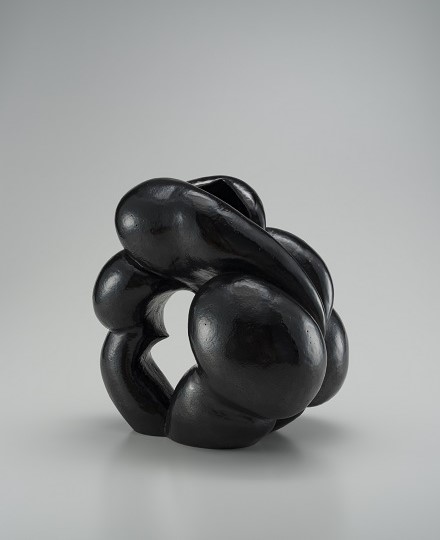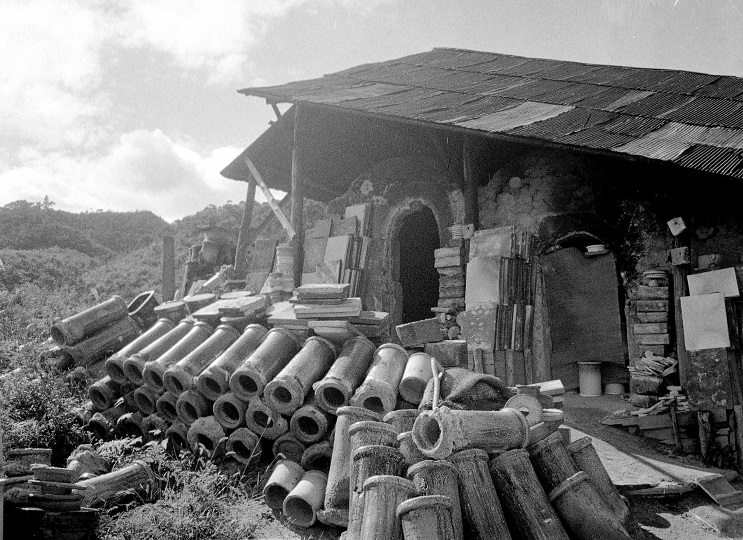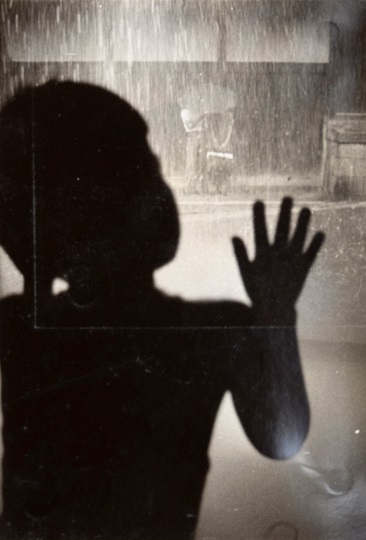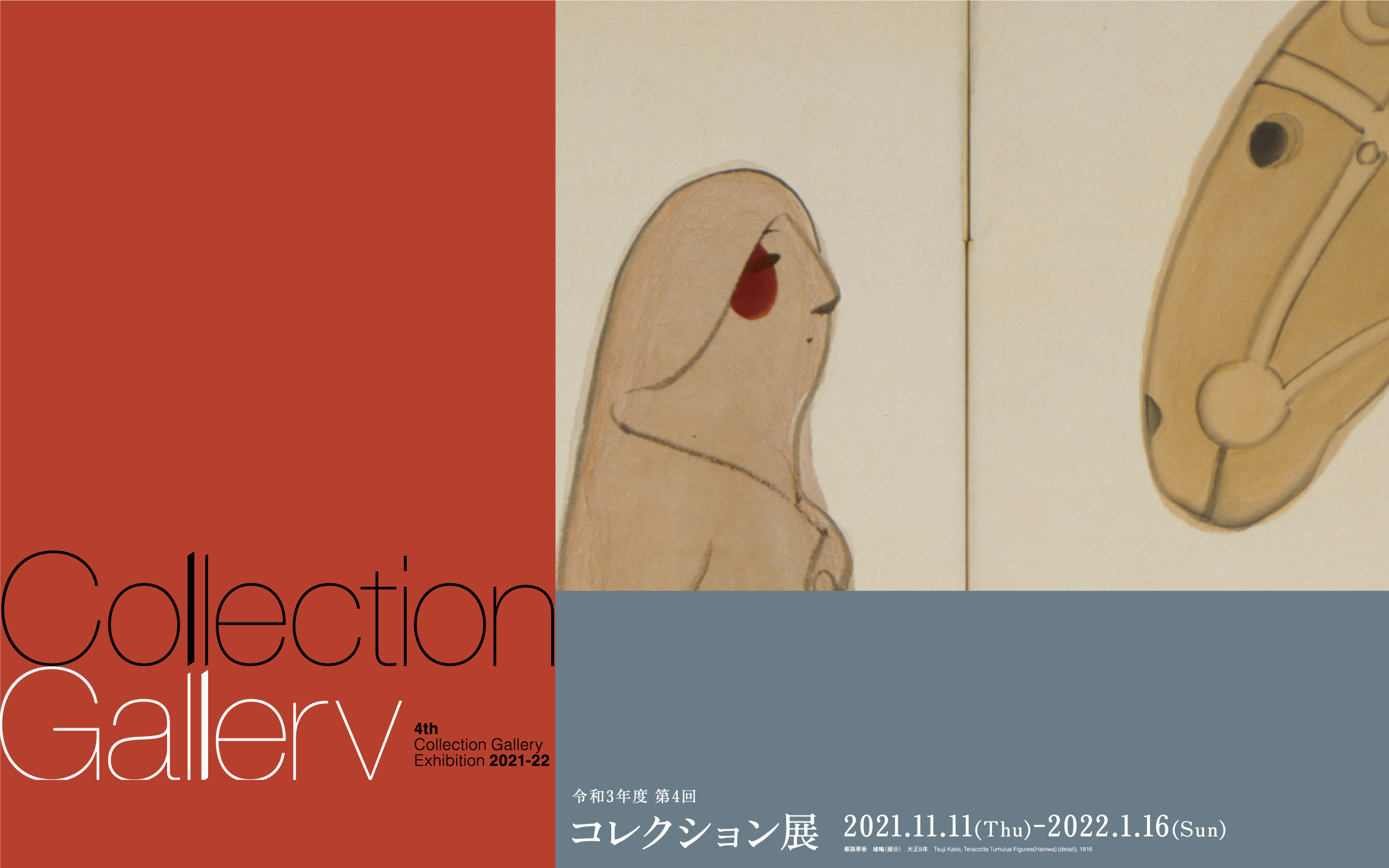
Collection Gallery
4th Collection Gallery Exhibition 2021–2022
2021.11.11 thu. - 01.16 sun.
Selected Works of Western Modern Art
In this section, we introduce some of the most outstanding examples of Western modern art that are contained or currently deposited in the museum collection. In this edition, we focus on three works by Marc Chagall (1887-1985).
Chagall was one of the preeminent painters of the 20th century. He was born in 1887 in a Jewish settlement on the outskirts of Vitebsk, a regional city which was then part of the Russian Empire, but is now located in the Republic of Belarus. His life came to a close at the age of 97 in the French town of Saint-Paul de Vence in 1985. After attending an art school in Petersburg (now St. Petersburg) when he was 19, Chagall moved to Paris, where new forms of artistic expression such as Fauvism and Cubism were blossoming. He studied extensively, laying the groundwork for his career as a painter. Later, after a period in Russia that coincided with the outbreak of World War I and the Russian Revolution, Chagall returned to Paris and began to expand his sphere of activity. The subsequent rise of Nazi Germany and the outbreak of World War II forced Chagall to seek exile in the U.S. But this turned out to be a dark period for him, as his beloved wife Bella succumbed to an illness there. After the war, Chagall went back to Paris again, and after establishing a base in the South of France, he produced many richly colored works amid the region’s serene atmosphere and bright sunlight.
Flowers on the Roof, a work from around 1925, depicts a vase on top of a simple roof in the lower part of the picture, and an angel frolicking among an arrangement of red flowers. In 1923, Chagall had finally managed to return to Paris after a difficult period in Russia that began in June of 1914. There, Chagall lay the foundations for his life with Bella and their daughter Ida, and pushed forward with his new work. This painting plainly expresses the artist’s emotions after arriving at a fulfilling point in his life in the wake of so much strife.
Yet, the 1940s brought the greatest despair and hardship in Chagall’s life, as he was confronted with the extreme Anti-Semitism that accompanied the war, and the sudden death of his wife. In 1948, he finally managed to return to France, settling in the southern town of Vence not far from Matisse and Picasso. In 1952, Chagall met Valentina (“Vava”) Brodsky and married her later that year. Along with some lovers floating in the air, Flowers and Lovers, a work from this period, depicts a dining table with a large vase full of bright flowers on top of it, a violinist, and a man and woman lined up in compartments that have the appearance of coffins. It has been suggested that the work was intended as a celebration of Chagall’s marriage to Vava.
While spending a stable life in his twilight years, Chagall created works teeming with beautiful colors and unrestrained brushstrokes. These paintings deal with his nostalgia for his hometown, the people he loved, various themes related to circuses and the Bible, which he had often depicted in the past, and his own experiences. Mother and Child is a work that is very much of this period. It depicts a large vase, and a mother and child on a horse floating in midair as they watch over a town that seems to be Vitebsk.
All three of these works include a vase full of flowers. Flowers and bouquets are motifs that frequently appear in Chagall’s paintings. Chagall revealed that his depiction of bouquets began when Bella brought him a bouquet of flowers on his 28th birthday, and in the following quote, he touches on the fact that they were intended to be symbols of love and happiness: “In the arts, as in life, everything is possible provided it is based on love.”
Special Feature: TSUJI Kako
The 150th Anniversary of His Birth and the 90th Anniversary of His Death TSUJI Kako, Teracotta Tumulus Figures (Haniwa), 1916
Tsuji Kako (1871-1931) was born in what is now Miyagi-cho, Aneyakoji-dori Ogawahigashi-iru, Nakagyo-ku, Kyoto. His birth name was Tsuji Ryokei, and he was commonly known as Unosuke and adopted the artist’s name of Tsuji Kako. The Tsuji family evidently moved to Kyoto in his grandfather’s time and ran a plant shop near the Kyoto Prefectural Office, but his father moved to his Aneyakoji-Ogawa and made a living as a yuzen textile dyeing artisan. Kako loved to draw and paint from early childhood, and enrolled in the art class of the esteemed Kono Bairei at the age of nine. He was both the fastest-learning and the youngest of the group known as Bairei’s four most illustrious pupils, which also included Kikuchi Hobun, Taniguchi Kokyo, and Takeuchi Seiho. His works in the Maruyama-Shijo School style, such as River Fishes and Sea Fishes and Spring Evening, show him growing and emerging as a full-fledged artist under Bairei’s instruction. He also studied the Kano School and Rinpa styles and literati painting, and for a time produced craft designs to assist his family’s business. Kako also underwent spiritual training by practicing Zen meditation with Head Priest Takeda Mokurai at Kennin-ji Temple, and the unique style and atmosphere of his paintings, fostered by these various experiences, were highly regarded among his fellow painters. He taught younger generations of students at the Kyoto Municipal School of Arts and Crafts and the Kyoto Municipal Special School of Painting, and also served as the principal of both schools.
Kako employed highly experimental brushwork, as in works such as White Clouds over Red Leaves and Entering Mt. Koya made with the technique of decalcomania (sandwiching paint between two sheets of paper to obtain chance material effects), and the improvisational expression of waves in Bright Moonlit Night connects to the spirit of literati painting. However, the beautiful rhythms of these intentionally uneven brushstrokes and undulating lines were only able to emerge because Kako continued to refine his skills and never neglected daily practice, and in this we can see his earnest dedication to his art. He always hung a work by Kono Bairei in the entryway to his house, and the fact that his final work was a portrait of the Zen priest Mokurai also illuminates Kako’s serious, honest, and warm-hearted character.
Modern ⇄ Postmodern:
Architects and Architecture in Flux Charles JENCKS, Tea & Coffee Piazza, 1983
Should architecture be practical, or beautiful?
Even if it cannot be reduced to such a simple dichotomy, since the modern age began and stylistic uniformity faded, architecture has always wavered between these two extremes.
The era of prioritizing function began in the 1920s, after World War I. Europe faced accelerating housing shortages, and meeting the massive demand quickly and efficiently was an urgent challenge. Architects adopted scientific approaches in search of solutions to this issue spanning national borders, and this marked the dawn of the modernist movement in architecture.
Ueno Isaburo, the husband of Felice [Lizzi] Rix-Ueno, went to Europe in 1922 and worked under Josef Casimir Hofmann. Having seen Europe in the midst of the above-described crisis, he subsequently founded Nihon International Kenchiku-kai (the International Architecture Association of Japan), which can be called the Japanese equivalent of CIAM (Congrès Internationaux d’Architecture Moderne, or the International Congresses of Modern Architecture) and International Housing Association, an already established international networks of architects in Europe.
One would think that prioritizing function and eliminating decorative elements would rob architecture of any distinct personality, but in fact the opposite was true. Architects boldly expressed the forms of buildings themselves, as opposed to superficial decorations. In Learning from Las Vegas (1972), Robert Venturi et al. critiqued this as a basic contradiction of modernist architecture, helping to spark attempts by architects around the world to transcend modernism. Charles Jencks described the new mode as “post-modern architecture” in his The Language of Post-Modern Architecture (1977). Born out of critical stance toward modernism, postmodern architecture emphasized not only the function but also the message of designs. In doing so, architects sought to make their works more critical of the current era by quoting from and exaggerating historical architectural motifs.
In response to this zeitgeist, the National Museum of Modern Art, Kyoto held the exhibition Contemporary Landscape: From the Horizon of Postmodern Design in 1985, with an exhibition venue designed by architect Maki Fumihiko. The current National Museum of Modern Art, Kyoto building, also designed by Maki, was completed the following year. At that time, it was described Japan’s most prominent work of postmodern architecture.
Since the dawn of the modern age and the end of the dominance of any one style, modern and postmodern have continually ebbed and flowed. Indeed, prevailing attitudes toward these conflicting styles seem to reflect the character of a given era. Modern or postmodern: which era would you like to inhabit?
The Design of Modern Crafts TOMIMOTO Kenkichi, Ornamental Box, Overglaze Enamels, 1941
The appeal of crafts lies not only in their three-dimensional forms, but also in the patterns and decorations applied to them. These range from familiar auspicious motifs and nature-inspired “flower, bird, wind and moon” designs to more pictorial expressions that treat the entire surface of the piece as if it were a single picture plane. In this exhibit, we present “repeating designs” that create an overall pattern through repetition of a specific motif.
Tomimoto Kenkichi, one of Japan’s most renowned modern ceramicists, wrote that “for some reason, patterns tend to have many parts that repeat. This phenomenon seems to originate with repeated arrays of threads of different colors in textile-making.” This is a quote from Tomimoto’s unfinished manuscript My Ceramics Making, which goes on to state, “As a result of many centuries of drastic simplification, division, repetition, addition, combination and so forth due to the inherent limitations of the materials, ceramic patterns are characterized by a great number of constructive factors.”
Take a closer look at “repeating designs,” and we find a wide range of variations. While specific motifs are repeated at regular intervals, there are some that gradually evolve, proliferate, and spread, as in the works of Moriguchi Kunihiko, and others in which motifs are connected in a circle to form an unending and uninterrupted pattern, as in works by Kawai Kanjiro. Even when motifs are randomly combined, as in works by Miyata Rando III (Kohei), or colors shift so as to create the appearance of different patterns, the structure is still one of repetition. In some textiles, these repetitions are the inevitable result of a technique, such as stencil dyeing, or of the manufacturing process, as with print textiles.
Awatsuji Hiroshi, known as a textile designer with a strong awareness of relationships between design and space, said of the special properties of repeating patterns: “These patterns tell a story. They do not overwhelm the viewer with force, in the manner of non-functional decorative elements of works of art that only deliver the message of the artist. When a single shape is repeated, it becomes ambiguous, the repetition finds a rhythm, and it becomes something pleasant to behold.”
The Age of Avant-Garde Ceramics HAYASHI Yasuo, Cloud, 1948
The term “avant-garde” is not often heard today, but it was frequently applied to art that emerged in the new era after World War II. In ceramic art, individual creators did not rise to prominence until the modern era, and creative activities in this medium developed in various ceramics-producing regions of Japan, each with its own distinctive characteristics. Before the war, the Nitten (Japan Fine Arts Exhibition) was a government-sponsored exhibition where many ceramic artists sought to present their works, but in the postwar years artistic styles diversified, and various artists’ groups of varying sizes were formed and became the primary forum for avant-garde ceramics activity. Kyoto, and more broadly the Kansai region, was the main locus of this activity, and in 1946 Yagi Kazuo and others led by Nakajima Kiyoshi formed the young ceramic artists’ group Seinen Sakuto Shudan, the first postwar ceramic art association to arise in Kyoto. The following year Uno Sango, Hayashi Yasuo and others formed the Shikokai group, and in 1948, Seinen Sakuto Shudan was progressively dissolved and Yagi Kazuo, Yamada Hikaru, Suzuki Osamu and others formed another group, Sodeisha. Today, Shikokai and Sodeisha are particularly noted in the history of art and crafts for the non-functional ceramic art objects that members of both groups pursued, and for which they gained widespread recognition. Also, Kawakami Rikizo and others formed the group MAGMA in 1958 with the aim of creating works, particular in the ceramics medium that could be viewed outdoors or without pedestals. As for organizations outside Kyoto, the Modern Art Association served as a venue for presentation of ceramic sculptures by Kumakura Junkichi, Fujimoto Yoshimichi, and Yanagihara Mutsuo. The majority of avant-garde ceramicists active in various groups eventually became members of Sodeisha, which continued to lead the Japanese ceramic art world until its dissolution in 1998. Here, in conjunction with the exhibit Curatorial Studies 15: Yagi Kazuo: The Photographs of a Ceramicist, we are pleased to present some of the avant-garde ceramics in the museum’s collection.
KAZUKI Yasuo and “Simplification” in Japanese Western-style Painting KAZUKI Yasuo, Stream, 1961
Kazuki Yasuo (1911-1974) was among the most eminent postwar Japanese artists. As this year marks the 110th anniversary of his birth, a large-scale retrospective exhibition is being held (including White Magic, a work from this museum’s collection). Here, we are pleased to present some of his paintings from a private collection which have been deposited to the museum.
It is well known that shortly after his painting career began, Kazuki was conscripted and went to Manchuria, later spending over a year in a Siberian prisoner-of-war camp after World War II ended. He acknowledged that memories of these experiences continued to cast a dark shadow over his postwar works. At the same time, he retained an unquenchable desire to paint, regardless of his memories of war and detainment.
Since his youth, before the war, he had consistently addressed the challenge of composing with simplified lines, colors and shapes. Originally drawn to the painting style of Umehara Ryuzaburo (1888-1986), Kazuki took “trying to paint in the Umehara style” as his point of departure, and was always conscious of the traditional aesthetics of Japan and East Asia such as Ukiyo-e prints and the Rinpa style. In part, this took the form of an orientation toward the symbolic and decorative by means of simplification and abstraction. However, it can be said that he brought it fully to fruition with a series of works from the late 1950s and 1960s that focused on his experiences as a detainee in Siberia. In these weighty compositions consisting primarily of ochre and black, the simplified shapes and colors appear to resonate with oppressively heavy and complex feelings about his Siberian experience.
Exhibited alongside Kazuki’s works are those of his teacher Umehara, and of Kumagai Morikazu (1880-1977) and Ujiyama Teppei (1910-1986), artists who were in Kazuki’s circle. Please enjoy the variety of approaches these artists adopted toward a shared concern with simplification and composition.
Curatorial Studies 15: Yagi Kazuo: The Photographs of a Ceramicist YAGI Kazuo, At Climing Kiln of Shigaraki, Shiga,1961, Private Collection YAGI Kazuo, At Awataguchi, Kyoto, 1962, Private Collection YAGI Kazuo, At Home, 1963, Private Collection
Yagi Kazuo (1918-1979) was a founding member in 1948 of Sodeisha, a collective of avant-garde potters, and a leading postwar Japanese ceramicist who pioneered so-called objet-yaki (non-functional ceramic objects). His work has been presented in a variety of exhibitions over the years, including The Ceramic Artist Kazuo Yagi in 1981 and Yagi Kazuo – A Retrospective in 2004. The latter was a comprehensive survey featuring not only Yagi’s ceramics but also bronze and glass works and prints. Yagi was a writer as well, and his essay Kaichu no fukei (“Pocket Landscapes”) (Kodansha), was published in 1976 and drew many fascinated readers. However, while some of Yagi’s photographs were featured in Yagi Kazuo & Kiyomizu Kyubey: Beyond the Boundaries of Ceramics and Sculpture, a 2017 exhibition at Kikuchi Kanjitsu Memorial Musée Tomo, his work as a photographer is much less widely known. A thorough posthumous survey of works and materials belonging to the Yagi family uncovered 14 photo albums compiled by Yagi himself, and thousands of printed photographs. These include those shot to document exhibition venues, but most capture things encountered while taking walks or traveling in the early to mid-1960s. A newspaper article at the time said of Yagi’s photography, “Yagi walks the streets, and when there is a scene or a form he finds appealing, he pulls a compact camera from his pocket and snaps away. His pictures of everything from crumbling earthen walls and spots on the sides of buildings to pits at construction sites fill more than 10 albums.” The enormous number of photographs in the possession of the Yagi family vividly convey his ceaseless curiosity, and his gentle, humorous, and witty attitude toward his subjects based on his experience as a potter. In this exhibit, we introduce this unknown side of the artist through 100 of his photographic works.
Exhibition Period
2021.11.11 thu. - 01.16 sun.
Themes of Exhibition
Selected Works of Western Modern Art
Special Feature: TSUJI Kako
The 150th Anniversary of His Birth and the 90th Anniversary of His Death
Modern ⇄ Postmodern:
Architects and Architecture in Flux
The Design of Modern Crafts
The Age of Avant-Garde Ceramics
KAZUKI Yasuo and “Simplification” in Japanese Western-style Painting
Curatorial Studies 15: Yagi Kazuo: The Photographs of a Ceramicist
[Outside] Outdoor Sculptures
List of Works
4th Collection Gallery Exhibition 2021–2022 (242 works in all) (PDF 2MB)
Free Audio Guide App
How to use Free Audio Guide (PDF)
Hours
9:30AM–5:00PM
*Fridays and Saturdays: 9:30AM–8:00PM
*Admission until 30 min. before closing
*Opening hours is subject to change, due to the prevention against COVID-19 pandemic. Please check the updated information, before your visit.
Admission
Adult: 430 yen (220 yen)
University students: 130 yen (70 yen)
High school students or younger,seniors (65 and over): Free
*Figures in parentheses are for groups of 20 or more.
Collection Gallery Free Admission Days
November 13, 14, 2021
In conjunction with...
November 11, 2021- January 16, 2022
Curatorial Studies 15:Yagi Kazuo: The Photographs of a Ceramicist
Free Audio Guide App How to use Free Audio Guide (PDF)



